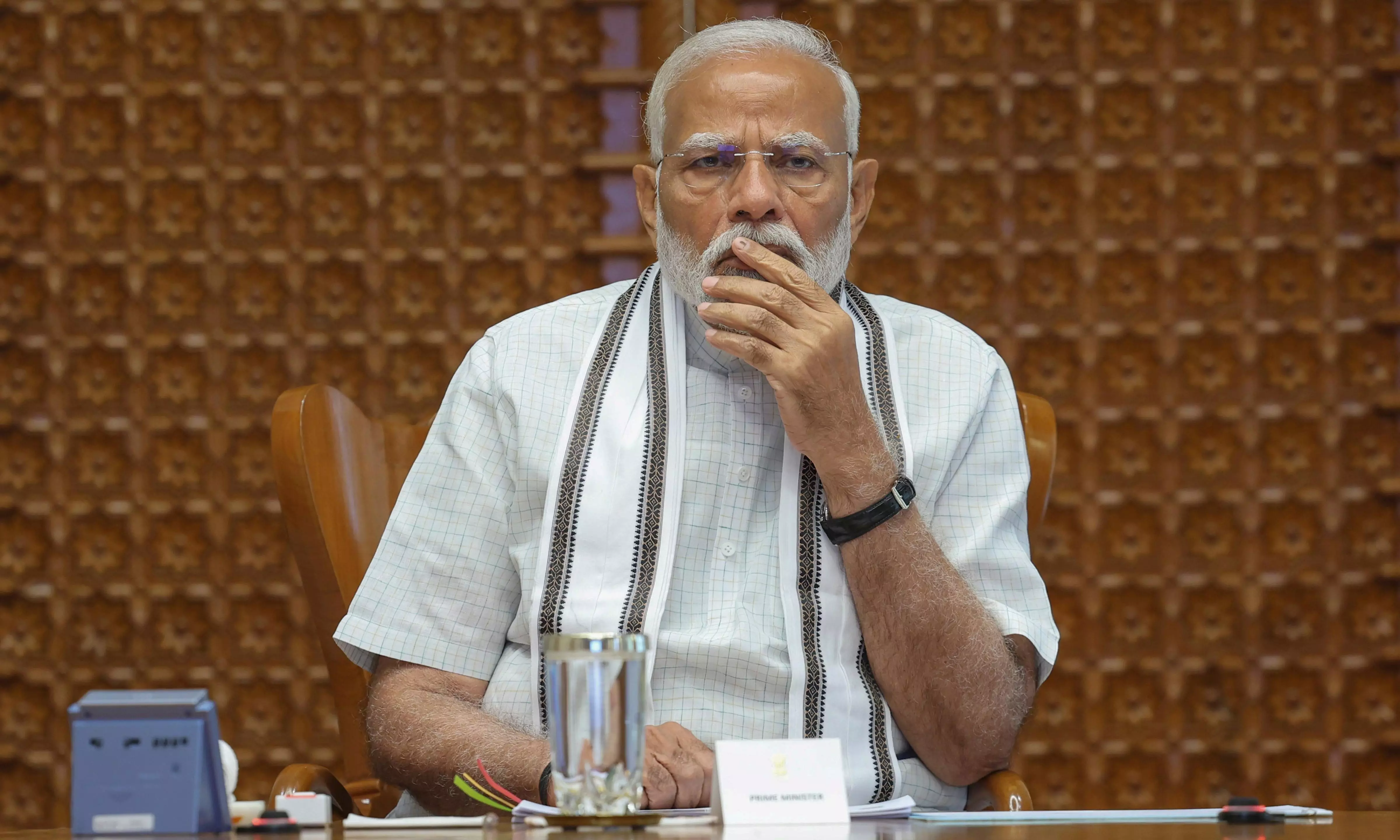
- Home
- India
- World
- Premium
- THE FEDERAL SPECIAL
- Analysis
- States
- Perspective
- Videos
- Sports
- Education
- Entertainment
- Elections
- Features
- Health
- Business
- Series
- In memoriam: Sheikh Mujibur Rahman
- Bishnoi's Men
- NEET TANGLE
- Economy Series
- Earth Day
- Kashmir’s Frozen Turbulence
- India@75
- The legend of Ramjanmabhoomi
- Liberalisation@30
- How to tame a dragon
- Celebrating biodiversity
- Farm Matters
- 50 days of solitude
- Bringing Migrants Home
- Budget 2020
- Jharkhand Votes
- The Federal Investigates
- The Federal Impact
- Vanishing Sand
- Gandhi @ 150
- Andhra Today
- Field report
- Operation Gulmarg
- Pandemic @1 Mn in India
- The Federal Year-End
- The Zero Year
- Science
- Brand studio
- Newsletter
- Elections 2024
- Events
- Home
- IndiaIndia
- World
- Analysis
- StatesStates
- PerspectivePerspective
- VideosVideos
- Sports
- Education
- Entertainment
- ElectionsElections
- Features
- Health
- BusinessBusiness
- Premium
- Loading...
Premium - Events

Indian democracy has become stronger with the emergence of a strong Opposition, and a clear verdict that the people do not appreciate the politics of hatred and division, peddled aggressively by Modi
Till the final tally comes in, we cannot say anything definitive about the results of the 2024 general elections. But some tentative conclusions can definitely be drawn.
One - India’s next government will be a coalition government.
Two - Indian democracy has become stronger, with the emergence of a strong Opposition, and a clear verdict that the people do not appreciate the politics of hatred and division, peddled aggressively by Prime Minister Narendra Modi.
Three - The Congress has halted its steady decline, which had persuaded several of its aspiring leaders and spokespersons to defect to the BJP.
Four - Rahul Gandhi acquires political authority within the Congress and the larger Opposition.
Five - The BJP, with a higher share of the vote than in 2019, remains the single-largest political force in the country, but it has been given a severe reality check and can no longer believe that its politics has natural traction in the country.
And six - India’s political leadership has narrowly escaped being consumed by the God complex.
Coalition governments are good
Many people worry that coalition governments are unstable, and bad for the economy, and that stable, single-party governments are an essential requirement for constructive policymaking. This belief is at total variance with India’s historical experience.
The government that launched the economic reforms was a minority government in 1991, and Narasimha Rao acquired a majority halfway through his government, and did practically nothing thereafter.
The United Front government that held office over 1996-98 aggressively pursued reform, materialising shares, bringing down tax rates, and setting up an independent regulator for the telecom sector.
The Vajpayee government, that took the reform baton from the United Front government and ran with it, was also a coalition government.
The subsequent UPA government was a coalition as well, and India registered its fastest- ever decadal compounded annual growth rate of 6.8 per cent under the UPA.
Single-party disasters
In contrast, the Modi government, in its first term, with an absolute majority for the BJP on its own, made disastrous moves like Demonetisation.
In its second term, with a larger majority for the BJP and entrenched political authority for the prime minister, the government tried to ram farm policy reform down the throats of farmers, without consulting them and taking their inputs into account, and beat a hasty retreat.
It failed to protect the small-scale sector of industry and the construction sector during Covid, killing many enterprises and dealing a severe blow to rural well-being. Indian households are now in debt to a degree not seen in the recent past.
There is every reason to expect that the next government would, whoever leads the coalition, follow policies that accelerate growth.
Revival of Congress
The revival of the Congress had seemed to flounder under the leadership of Rahul Gandhi. But to his credit, he stayed active on the political field.
Whatever else his pedestrian activism did, while talking of unity of the people and rejection of hatred, he managed to create a core around which the widespread popular disaffection against the Modi government could crystallise.
It is possible to make the case that the Opposition’s performance should have been far more decisive, given the economic distress in which large swathes of the population find themselves, with declining real rural wages, indebtedness, disruption of migration, and other anti-incumbency factors.
But, without Rahul Gandhi’s Bharat Jodo Yatra, it is unlikely that the INDIA alliance would have materialised, or that the mood would have turned from the near certainty of Modi’s return to office at the beginning of the election campaign to the possibility emerging during the campaign of the BJP numbers coming sharply down. This would serve to strengthen Rahul's leadership within the Congress party, and win him acceptance among other Opposition leaders.
Aggressive sectarianism
India’s polity is under severe stress, with aggressive sectarianism targeting India’s Muslim majority creating lasting division and destruction of the essential social cohesion without which no polity or economy can function.
Democracy gains strength also from the voters’ revealed disdain for the notion that their political loyalty can be bought with liberal handouts from the exchequer.
The Greek myth of Icarus has no counterpart in Indian tradition. True, Sampati, the vulture who confirms to Rama that Sita had been abducted by Ravana, as Rama and Laxmana go looking for the missing Sita, had got his wings burned by flying too close to the sun. But he allowed the sun to burn his feathers out of love and caring, trying to shelter his younger brother Jatayu from the fiery sun.
Icarus flew close to the sun to demonstrate his technical superiority over his father. His waxen wings melted, and he crashed to a fiery end. It is difficult to find a better metaphor for hubris.
Where Modi blundered
The BJP was flying high under Modi’s stewardship. He declared that he would get a two-thirds majority this time around. This was part of his downfall.
A majority that can amend the Constitution led to the worry that the Modi government, in its third term, plans to amend the Constitution.
Dalits do not like the idea that the Constitution, framed under the leadership of BR Ambedkar, would be excoriated. And they are wary of the RSS dislike of reservations.
Modi’s claims of divinity also put off people, instead of inspiring wondrous adoration. Hubris does not appeal to ordinary people.
(The Federal seeks to present views and opinions from all sides of the spectrum. The information, ideas or opinions in the article are of the author and do not necessarily reflect the views of The Federal.)


